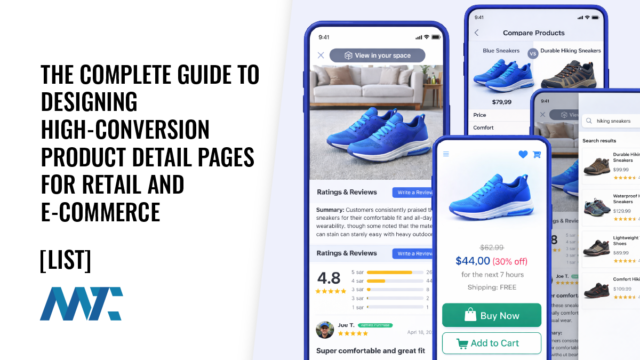How To Improve Your Sales Prospecting Effectiveness

Effective prospecting isn’t just about making calls or sending emails—it’s about implementing a strategic, multifaceted approach that yields measurable results. The most successful sales professionals understand prospecting requires a deliberate, systematic approach and continuous measurement and refinement. This comprehensive guide explores proven techniques to elevate your prospecting game and transform potential leads into valuable business relationships.
Table of Contents
Mastering the Daily Rhythm: The Power of Consistent Scheduling
Success in prospecting begins with an unwavering commitment to a structured schedule. The most effective sales professionals treat prospecting as a non-negotiable daily ritual, typically dedicating their peak energy hours to this critical task. While many debate the ideal time for prospecting, morning hours often prove most productive, as both the sales professional and potential clients are fresh and focused.
To establish an effective scheduling system, consider these proven approaches that top performers have implemented in their daily routines:
- Time Blocking: Dedicate 2-3 hours each morning exclusively to prospecting activities, treating this time as sacred and immovable.
- Weekly Planning: Structure your week with clear goals and metrics for different prospecting channels.
- Energy Management: Track and optimize your prospecting schedule based on when you consistently perform at your peak.
Success in scheduling comes from monitoring key metrics and constantly refining your approach. Track your adherence to scheduled prospecting time, measure activity completion rates, and regularly assess the quality of interactions during different time slots. This data-driven approach allows you to optimize your schedule for maximum effectiveness.
The Focus Factor: Executing Your Plan with Precision
Scattered efforts inevitably yield scattered results. The most successful prospectors understand that laser-focused execution of a well-designed plan is crucial for success. This means creating an environment and mindset conducive to focused, high-quality prospecting activities.
Creating an optimal prospecting environment requires careful attention to several key factors:
- Distraction Management: Establish a dedicated workspace where notifications are silenced, and interruptions are minimized.
- Mental Preparation: Develop pre-prospecting rituals that help you enter a focused state of mind.
- Environment Optimization: Ensure your workspace has all the necessary tools and resources.
The key to measuring focus lies in tracking both quantitative and qualitative metrics. Monitor the number of meaningful conversations you have during focused sessions and the quality of your interactions, and regularly assess whether your environment truly supports peak performance.
Diversifying Your Approach: The Multi-Channel Strategy
Different prospects respond to different approaches, making a diverse prospecting strategy essential for success. The key lies not just in implementing various techniques but in measuring their effectiveness and optimizing based on real data.
Consider these essential components of a multi-channel prospecting strategy:
- Channel Integration: Create a seamless experience across email, phone, social media, and in-person touchpoints.
- Content Customization: Develop channel-specific messaging that resonates with your target audience.
- Response Analysis: Implement systems to track and analyze prospect responses across all channels.
Success in multi-channel prospecting requires careful attention to metrics. Track response rates by channel, monitor conversion rates from initial contact to meaningful conversation and calculate the cost per lead for each approach. This data lets you optimize your resource allocation and focus on the most effective channels.
The Power of Scripting: Crafting Compelling Conversations
Effective scripts are foundations for natural, engaging conversations rather than rigid dialogues. The key lies in developing flexible frameworks that guide conversations while allowing authentic interaction and active listening.
Consider these fundamental elements of effective prospecting scripts:
- Conversation Flow: Create natural transitions between key discussion points while maintaining flexibility.
- Question Framework: Develop powerful, open-ended questions that encourage meaningful dialogue.
- Response Preparation: Prepare thoughtful responses to common objections and concerns.
Measuring script effectiveness goes beyond simple success rates. Track engagement levels during conversations, monitor how often you need to deviate from the script, and regularly gather feedback from prospects about the conversation quality. Use this information to refine your approach continuously.
Solution-Centric Prospecting: Beyond the Sale
The most successful prospectors understand that their role extends far beyond selling products or services—they are solution providers who create genuine value for their clients. This approach begins with a deep understanding of industry challenges and culminates in delivering transformative solutions.
The journey to becoming a trusted solution provider involves several critical steps:
- Industry Intelligence: Maintain deep knowledge of industry trends, challenges, and opportunities that affect your prospects.
- Problem Analysis: Develop frameworks for identifying and analyzing prospect challenges quickly and accurately.
- Solution Development: Create customized solution proposals that address specific prospect pain points.
Success in solution-centric prospecting requires consistent measurement of both immediate and long-term results. Track not just initial conversion rates, but also long-term client success metrics and satisfaction scores. This data helps refine your approach to solution development and delivery.
The Warm Approach: Building Digital Connections
Cold calling becomes significantly more effective when preceded by thoughtful digital engagement. Modern prospecting requires building meaningful online connections before making that first phone call. This approach transforms cold calls into warm conversations with familiar contacts.
The process of warming up prospects involves several key strategies:
- Social Engagement: Interact meaningfully with prospects’ professional social media content before direct contact.
- Content Sharing: Share relevant insights and resources demonstrating your understanding of their challenges.
- Network Building: Develop mutual connections that can facilitate introductions and build credibility.
Track engagement rates, response rates, and conversion rates for prospects who have been engaged digitally versus those who haven’t to measure the effectiveness of your warm calling approach. This data will help you optimize your digital engagement strategy.
Establishing Authority: Your Thought Leadership Journey
Building credibility through thought leadership is a crucial element of modern prospecting. When prospects research you and your company, they should find compelling content that establishes your expertise and understanding of their industry.
The path to thought leadership includes several key components:
- Content Strategy: Develop a consistent publishing schedule for industry insights and analysis.
- Platform Selection: Choose authoritative platforms that reach your target audience effectively.
- Engagement Metrics: Monitor how your thought leadership content influences prospect behavior.
Track the impact of your thought leadership efforts by measuring content engagement, prospect research patterns, and how often your published content is referenced during sales conversations. Use this data to refine your content strategy and platform choices.
Understanding the Prospecting Journey: Not Just Another Sale
Perhaps most importantly, effective prospectors understand that their role is distinct from that of a traditional salesperson. Prospecting is about qualifying leads, building relationships, and initiating meaningful conversations that may lead to sales opportunities.
This understanding shapes several key aspects of the prospecting approach:
- Qualification Focus: Emphasize identifying fit and potential rather than immediate sales opportunities.
- Relationship Building: Prioritize creating genuine connections over rushing to close deals.
- Journey Mapping: Understand and respect each prospect’s unique decision-making process.
Measure the success of this approach by tracking metrics like lead qualification accuracy, relationship duration, and conversion rates at different stages of the buyer journey. Use this data to optimize your qualification criteria and relationship-building strategies.
Conclusion: The Path to Prospecting Excellence
Effective prospecting is a journey of continuous improvement, not a destination. Success comes from consistent implementation of these strategies and regular measurement and refinement. By maintaining a balanced focus on scheduling, execution, diversity of approach, and script development while always keeping measurement at the forefront, you can significantly improve your prospecting effectiveness and achieve better results in your sales efforts.
Remember that the key to long-term success lies in treating prospecting as a systematic process that can be measured, analyzed, and improved over time. Regular review of your metrics, combined with thoughtful adjustments to your approach, will help you continually refine and enhance your prospecting effectiveness.
One of the most important and initial steps in sales is prospecting – which is the process of qualifying the leads who has demonstrated the desire to make a purchase decision. This step is pivotal in closing deals and as such, must be executed on time and properly to ensure success. In fact, statistics says that the first viable vendor to reach a decision maker has a 74% chance to win the deal if they manage to set the buying vision.
Garret Norris, Business Coaches Sydney
Ways to Prospect More Effectively








